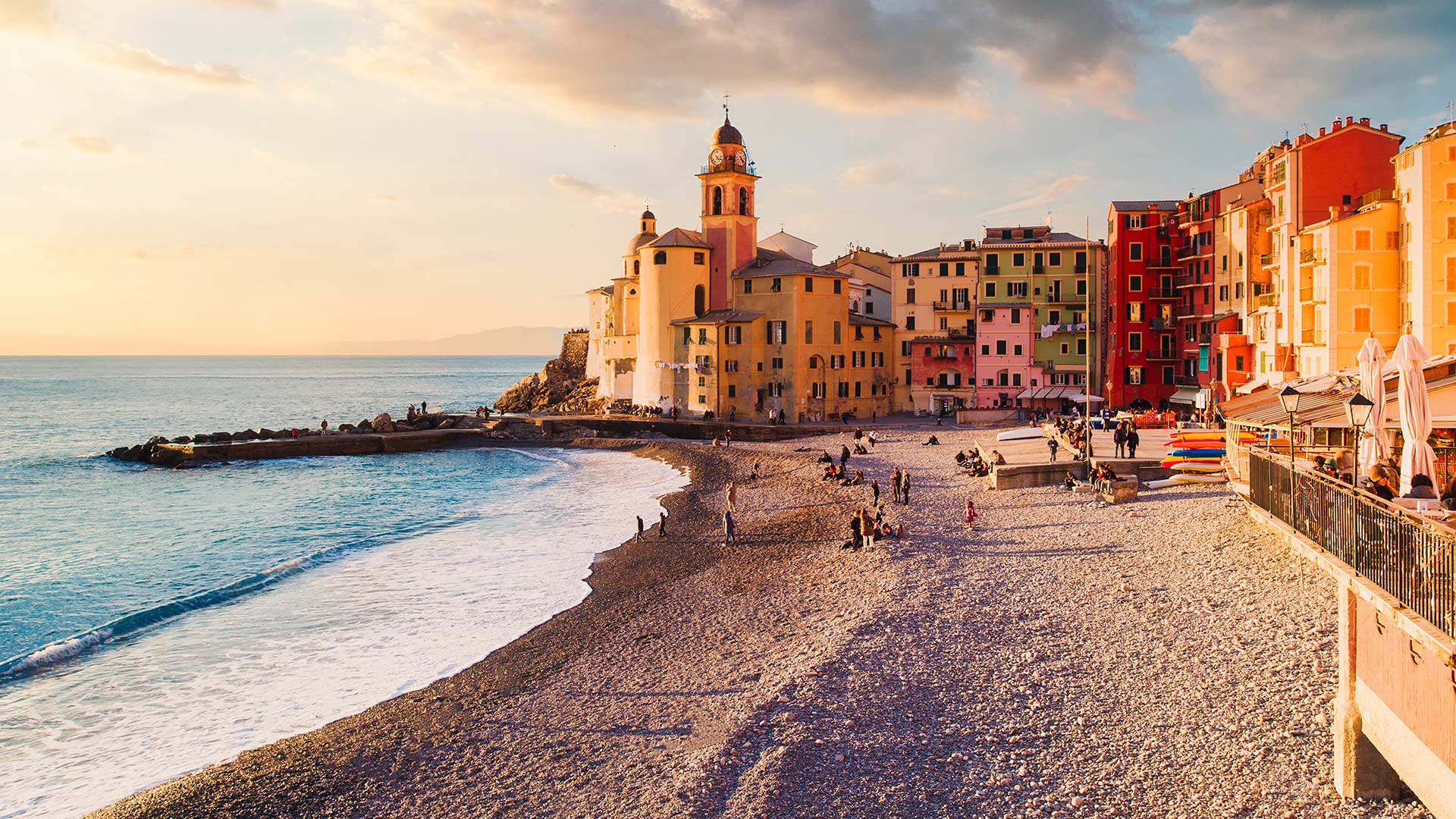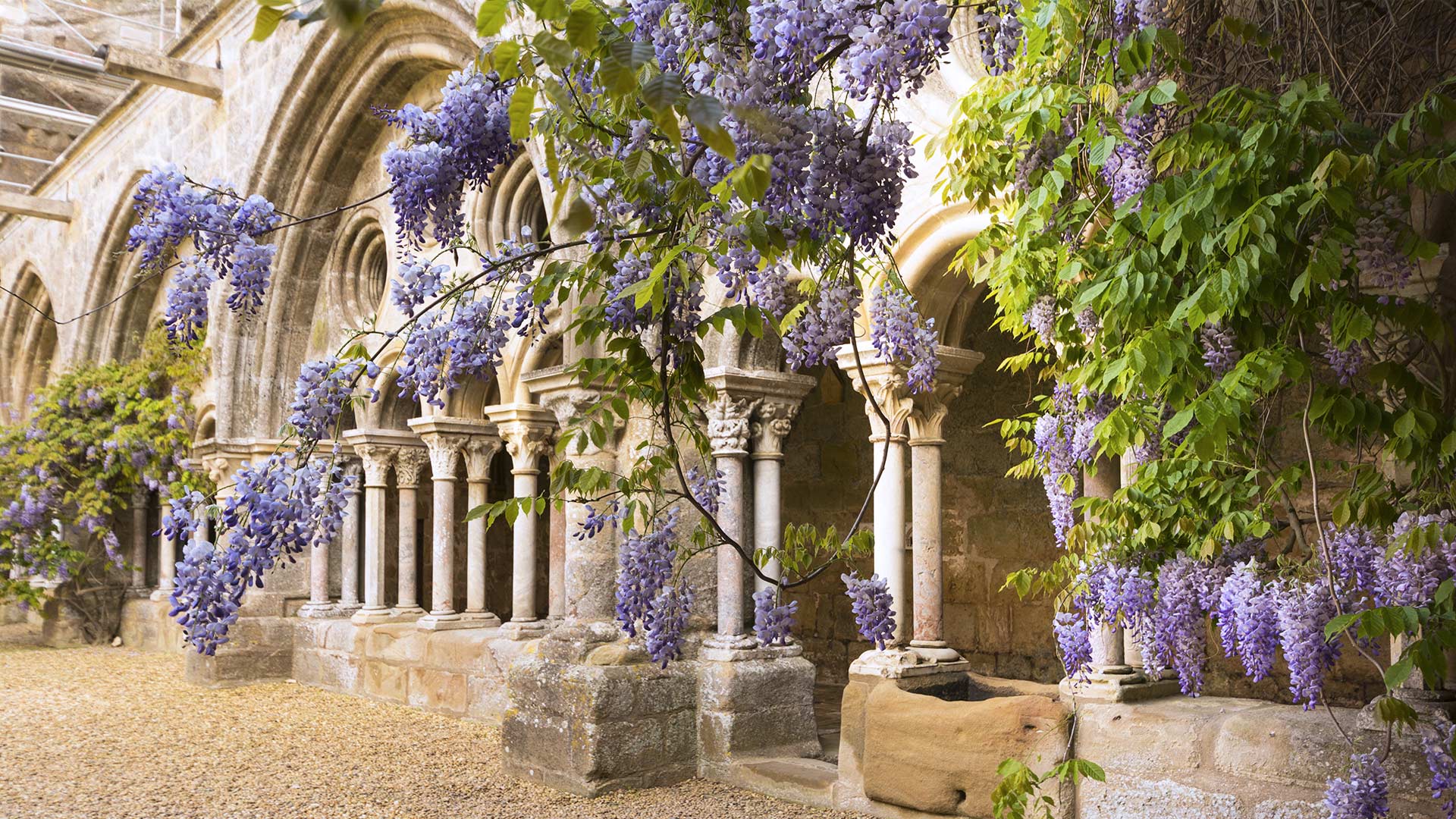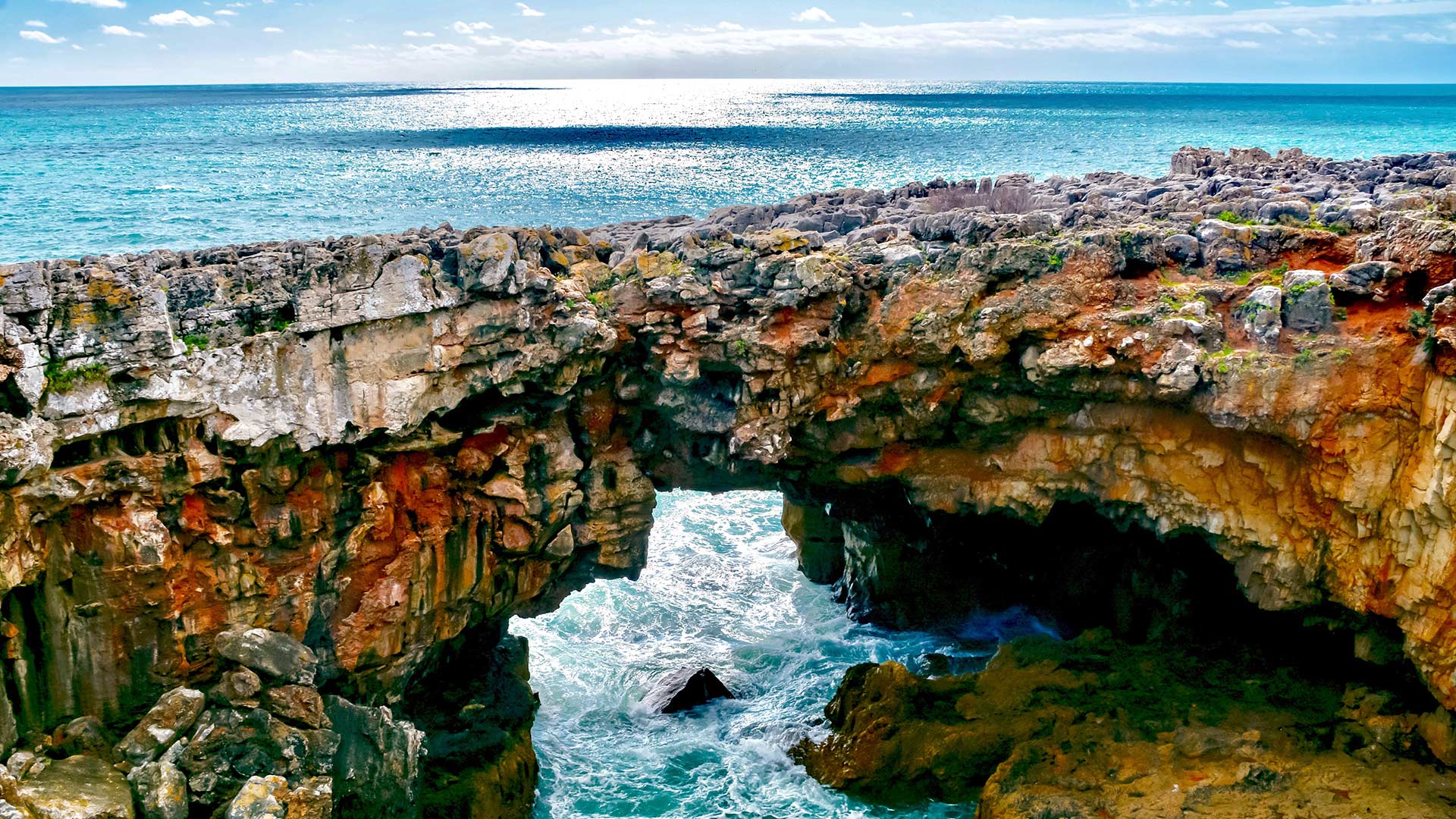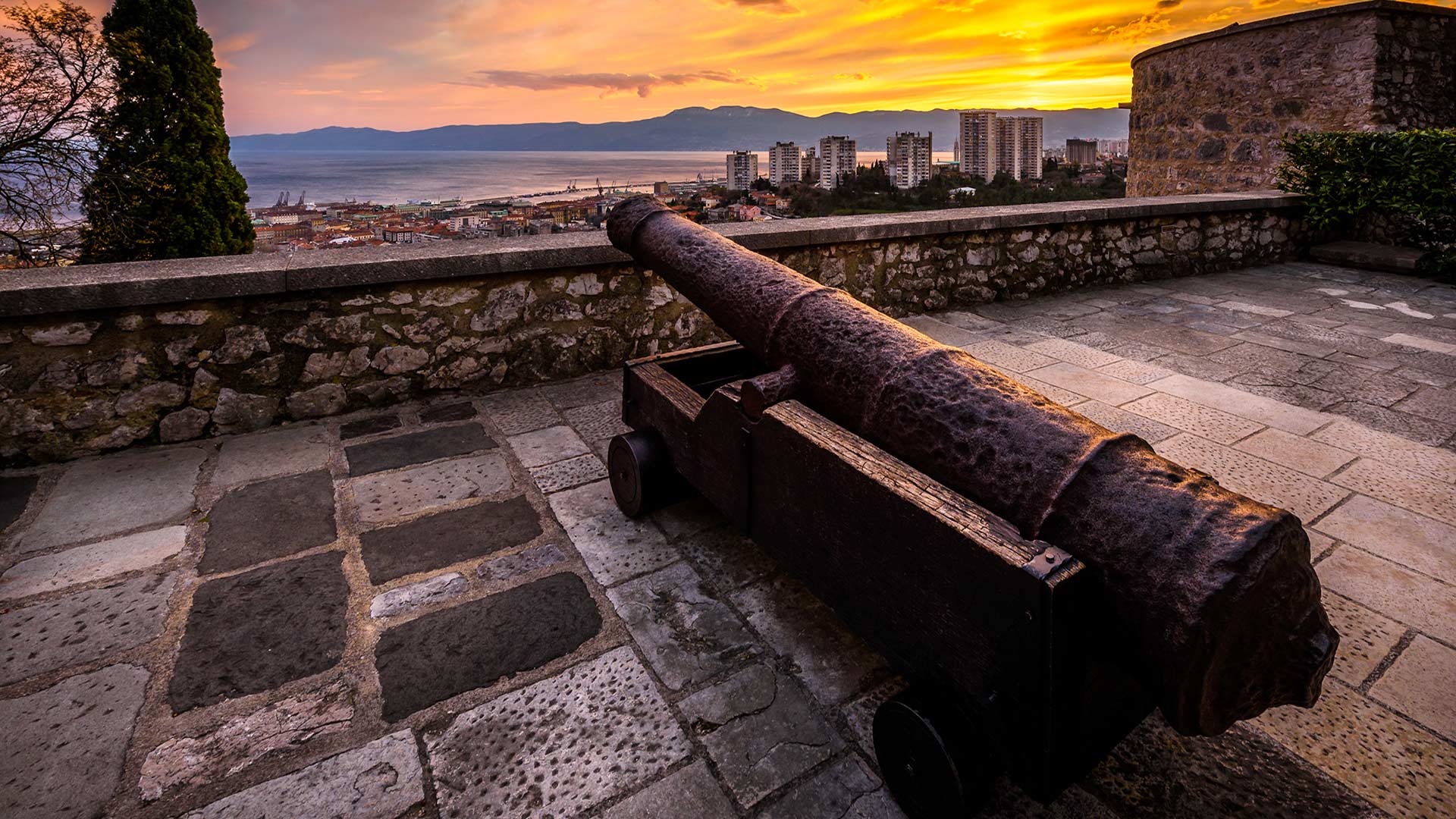
Stay for sunset on the beach in colorful Camogli. (Photo: Getty Images)
Tips + TrendsLook Beyond Bright Lights and Big Cities to Find Europe’s Most Delightful Small Towns
By Helen IatrouEurope’s major cities are teeming with cultural and historical attractions that, by default, amass crowds. But sometimes you just want to escape for a day of peaceful exploring. Here are some enchanting towns to discover while visiting five big cities in the Old Continent.
As always, check for travel guidelines and closures before planning your trip.
Milan to Camogli, Italy
If you’ve seen the British road trip comedy “The Trip to Italy,” you will recognize the understated — and underrated — Italian Riviera town of Camogli.
A two-hour train ride from Milan, the Ligurian fishing settlement draws mostly in-the-know Northern Italians to its romantic promenade, dark pebble beaches and affordable restaurants serving local specialties.
Grab a Camogli-style onion and sage focaccia from Revello and admire multistory homes whose cheery trompe l’oeil facades were painted in amber, lemon and terra-cotta red so that ships could distinguish the village from afar.
Catch a ferry to the secluded beach of San Fruttuoso where you can swim in the shade of a former Benedictine abbey. Divers can view an undersea bronze statue of Christ off the coast.
For dinner, head to La Rotonda‘s sea-facing terrace at sunset for a spaghetti alle vongole (spaghetti with clams) that will have you pining for a return visit.
Montpellier to Narbonne, France

If you’re staying in Montpellier, spend a day exploring the Languedoc coastal town of Narbonne, an hour and 15 minutes drive southwest.
Visit the 1,000-year-old Abbey of Fontfroide and its serene botanical garden, featured in Ridley Scott’s historical drama “The Last Duel,” starring Matt Damon.
Hike between the hilltop castles of Cathar, which during the 12th century served as sanctuaries for Christian spiritualists who renounced material wealth and sought a return to the ideals of poverty.
Pop into Narbo Via, a Norman Foster–designed museum that houses a collection of more than 1,000 ancient stone relief funerary blocks recovered from the city’s medieval walls — a testament to the city’s role as a key Roman port.
Splurge on an exquisite culinary journey through the region, including highly prized local eel, at biodynamic vintner Gérard Bertrand’s Michelin Plate restaurant, L’Art de Vivre.
Lisbon to Cascais, Portugal

If you notice surfers carrying their boards on the Lisbon subway, they are likely heading to the Atlantic Coast town of Cascais, a mere 35-minute train journey from the Portuguese capital.
Sand dune forests, lagoons, densely forested mountains and a craggy 18-mile stretch of coastline dotted with vertiginous cliffs and spectacular beaches are among the highlights of the Sintra-Cascais Natural Park, which covers about a third of Cascais.
Catch challenging breaks at sprawling Praia do Guincho beach, where Moana Surf School offers lessons year-round.
In the Bairro dos Museus (Museum Quarter), visit the Museu Condes de Castro Guimarães, a revivalist-style palace built in 1897 and host to rare pieces of Indo-Portuguese furniture.
As the sun starts to dip, take in the geological wonder that is Boca do Inferno (Mouth of Hell), a rocky chasm battered by dramatic waves. Later, sample the area’s celebrated shellfish, including tiger prawns, crab and spiny lobster, at Mar do Inferno.
Zagreb to Rijeka, Croatia

If you’re visiting Zagreb, take a day trip to the port town of Rijeka, an hour and 45 minutes away by car.
Start your day here with a classic brunch of maneštra soup (a Croatian version of minestrone) or beans and sauerkraut at one of the restaurants on Korzo promenade, which is always buzzing with locals.
Head up to Trsat Castle, one of the oldest early medieval fortifications on the Croatian coast, to take in sweeping views of the old town and attend a summer concert, fashion show or theatrical performance.
One of Rijeka’s more unusual attractions is a 1,148-foot subterranean military tunnel, which Italian forces excavated during WWII to protect civilians in the strategically located city from aerial bombings.
Follow the extensive Routes of the Frankopans, a cultural journey that passes through Rijeka and traces the aristocratic Croatian family’s influence and power from the early 12th to mid-17th centuries.
Stockholm to Vaxholm, Sweden
Stockholm may be über-cool, but so is its skärgård (archipelago) with its fairy-tale-like island towns. One of the easiest to access is Vaxholm, just 45 minutes by bus from the Swedish capital.
Breathe in the fresh air as you walk by the fishing town’s pastel-hued wooden homes dating to the early 20th century.
Visit the fortress that King Gustav Vasa established in the 1500s to safeguard Stockholm, which hosted everyone from senior military and their families to soldiers, servants and prisoners.
Catch a glimpse of local wildlife, such as sea eagles, ospreys, seals and beavers, by renting a sea kayak and weaving around the coastline.
In the late 19th century, socialites flocked to Vaxholm to vacation and dine on its renowned herring, which remains a menu staple today. Try the fish tacos at Bistro Magasinet and enjoy panoramic views of the harbor.







